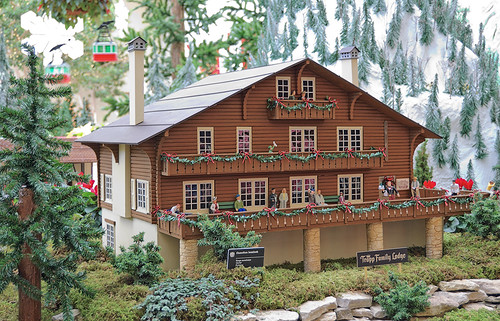
The theme of this year's Christmas floral exhibit is the New England state of Vermont, and shown here a model of the Trapp Family Lodge, in Stowe, Vermont.
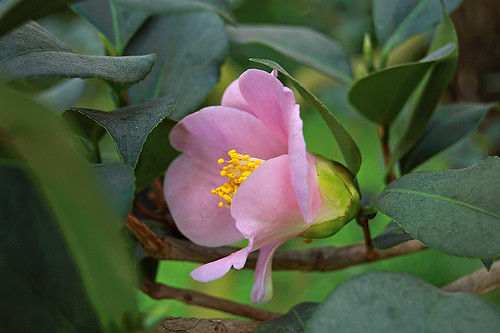
A camellia flower, in the Linnean House.
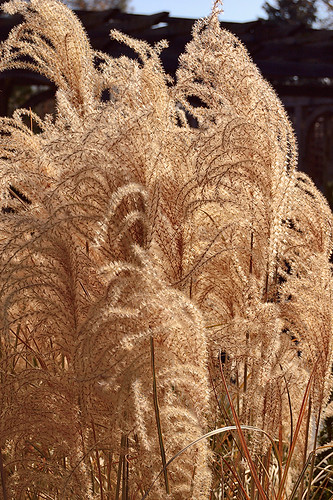
Decorative grasses.
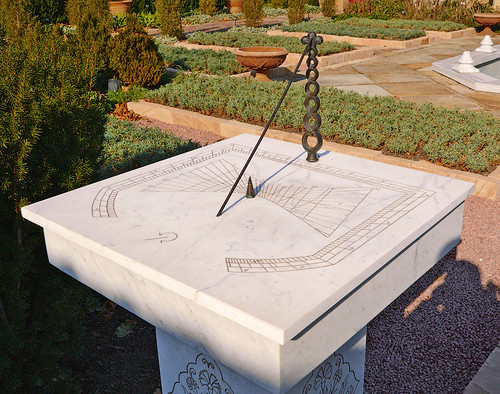
A fairly complex sundial, located in the Ottoman Garden. Gnomonics, the study of sundials, has a history going back at least 5,500 years in Egypt, and we ought to remember that the study of the passage of time was quite accurate even in remote antiquity. The Ottomans, as did the Latins of the West, got their knowledge of sundials from the Greek philosophers. Could any sundial expert shed some light on this dial's furnishings, particularly the analog graph and nodus in the middle, and the Omega with arrow near the bottom?
Sundials in the West, up to the end of the age of Christendom, showed 'temporary' hours — hours that would vary in length throughout the year — and each particular day (or night) was exactly divided into twelve hours. The length of Divine Office prayers, as defined by Saint Benedict, varied according to season in recognition of these variable hours. Strangely, a day divided into twelve hours was used in major cultures throughout the ancient world.

An Ottoman-style fountain.
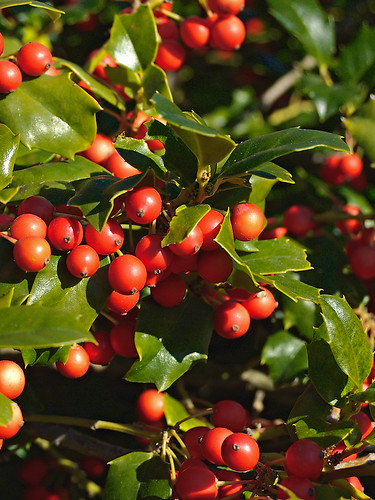
Holly berries, Ilex genus, in the Victorian Garden.

Rose buds, ready to bloom, at this time of year?
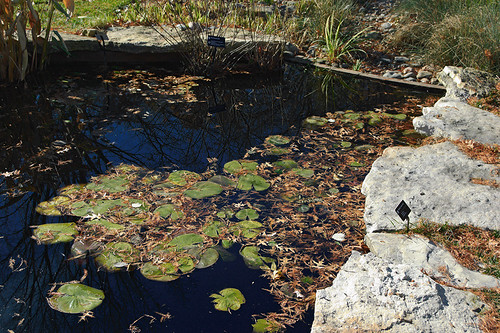
Lilly pads in a pond, hidden-away and rarely-visited but by the birds of the air.
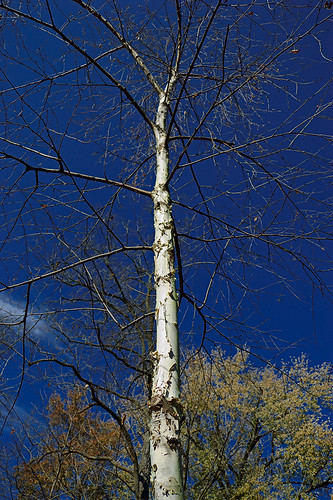
Birch tree (Betula genus), in the English Woodland Garden. The cold months in Saint Louis often feature brilliant, clear, saturated skies, as seen here, in contrast to the pale haze of summer.
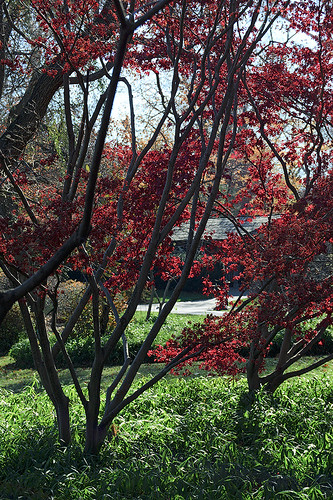
Japanese Maples, in the Japanese Garden. Tokyo, Japan, has a climate similar to Saint Louis, and so species of gardens of that type thrive well here. Oddly enough, there were some maple trees in this garden that were still nearly entirely green at this late time of year — just one leaf was starting to turn red; I was curious as to its species, but the tree's tag just indicated that it was of the Acer genus, species unknown.
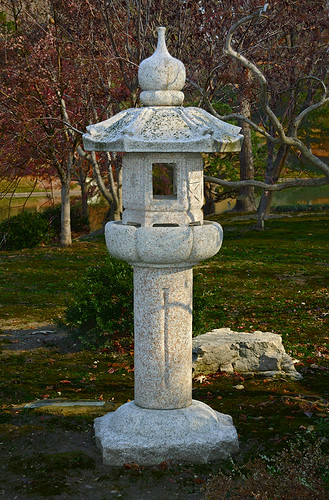 .
.A traditional lantern.

Chrysanthemums, with rapidly-declining blooms, above a raked garden.
Shaw's Japanese Garden is in the style known as a "wet strolling garden", as developed by the mid 19th century. Although the design of such gardens is based on religious principles, perhaps unfamiliar to us, a Catholic ought to recognize that all that is true, good, and beautiful ultimately comes from God; however, we also ought to note that the Japanese have a natural law tradition, and so values many familiar principles of number, symmetry, similarity, order, and scale.

Hungry koi, ornamental varieties of the Common carp (Cyprinus carpio), beg for food. Koi breeding began in the 18th century.

But Mr. Duck (a Mallard, Anas platyrhynchos) quickly grabbed all of the food I dropped into the water for the sluggish fish. Such speed is an advantage of being warm blooded. But if the fish can't eat now, they can always wait until next month: such is the advantage of being cold blooded!
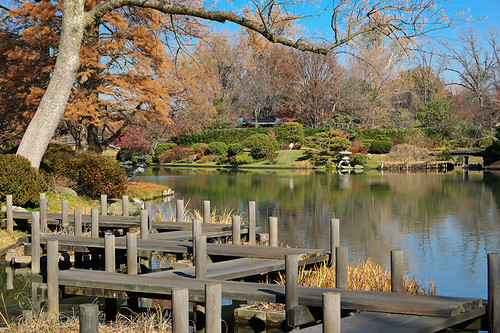
A zig-zag bridge.
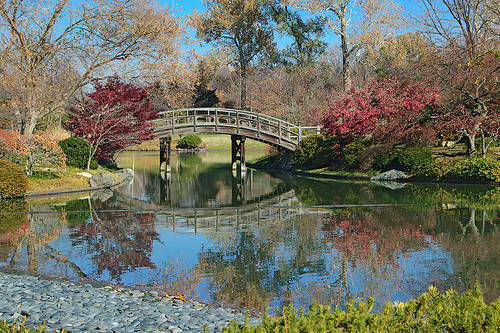
A drum bridge amidst rapidly-fading floral color. It was a remarkably beautiful and mild day, nearly perfect for a stroll.
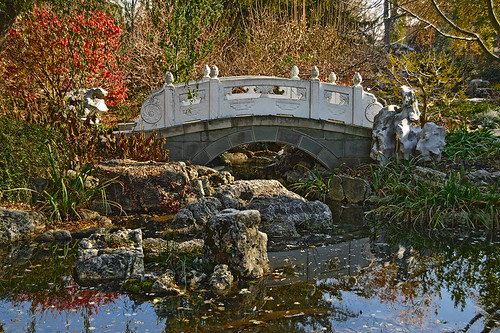
A marble bridge in the Chinese Garden.

Winterberries, Ilex verticillata, in the Bird Garden.

Hungry koi, ornamental varieties of the Common carp (Cyprinus carpio), beg for food. Koi breeding began in the 18th century.

But Mr. Duck (a Mallard, Anas platyrhynchos) quickly grabbed all of the food I dropped into the water for the sluggish fish. Such speed is an advantage of being warm blooded. But if the fish can't eat now, they can always wait until next month: such is the advantage of being cold blooded!

A zig-zag bridge.

A drum bridge amidst rapidly-fading floral color. It was a remarkably beautiful and mild day, nearly perfect for a stroll.

A marble bridge in the Chinese Garden.

Winterberries, Ilex verticillata, in the Bird Garden.


No comments:
Post a Comment